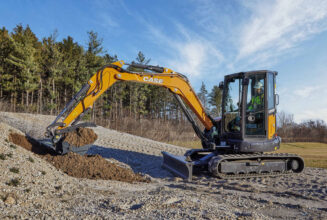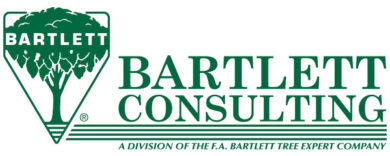Plants Register Green at Retail Registers
By Jon LaDow
The exterior landscaping of retail environments has become increasingly popular over the last few decades with many architects including plants in their design specifications for new shopping centers and retail establishments. But what is it about plants that make them such an important design element with bottom line impact; and how does poor plant design and maintenance reflect on retailers?
Retailers have long understood the importance of the interior store environment in enhancing the shopping experience. But while retailers are focused on the presentation of their product and store, they sometimes overlook the common areas that surround their shop. The outdoor landscape can be the unspoiled extension of shop interiors — providing indoor and outdoor continuity for a positive shopping experience that enthralls all our senses. Interior plants and landscaping work together synergistically to create store interiors that are more favorable for retail activity. Although much of the evidence is subjective, it is clear that most retailers believe that plants are a vital part of the selling environment and are prepared to allocate the space and resources to accommodate them.
So what are the top retail plantscaping foibles, and what interior landscaping trends deserve recognition and applause? Here are my picks for the best and worst in retail plantscaping practices:
Retail plantscaping foibles
1. Plant containers used as trash bins — If the plant containers are filled with trash rather than being lovingly maintained, the message conveyed to customers is that no one is minding the store. Maintenance is crucial when integrating live or faux plantings in a retail setting and part of the day-to-day upkeep necessitates frequent maintenance to ensure the healthy life of the plants and their container home.
2. Trampled plants in pedestrian walkways — Retail customers will always take the fastest and easiest route to their destination. Walking past trampled plants that are destroyed by heavy pedestrian traffic establishes a poor reputation for the overall retail environment.
3. Using plantings to trash the environment — Trucking in equipment from miles away to maintain plantings with constant pruning dictates that refuse be removed from the property to landfills which expands rather than contracts our carbon footprint. Featuring clipped hedged plantings that require the use of carbon hogging machinery is not reflective of our environmentally conscious 21st century sensibilities.
4. Relying on same old greenery — “Failure to launch” in retail circles translates to relying on the same old types of plantings that have been used for generations. As the seasons and fashion styles change, so should plantings. Customers like to be surprised and energized by the plantings that surround them.
5. Dead and dying plants bleed red at the register — Nothing turns customers away faster than poor-looking plants that are teetering by death’s door. How can a customer feel nurtured by a retailer if the retailer fails to nurture their own plants?
Retail plantscaping deserving of kudos
1. Plantings with pedestrian control — From a designer’s perspective, planting for pedestrian control is an important function that you can fulfill with plants that guide and direct customers. To maneuver customers to take a certain route, strategically placed plantings around the walkway closest to the route people want to walk acts as a green guide. Plants offer an attractive and practical solution, providing a living barrier that gently guides people to where you want them to go. Choosing the right plants and containers for this purpose is very important. Spiky plants or those with sharp-edged leaves would clearly be inappropriate in an area designed for heavy pedestrian traffic flow. Containers need to be robust, take up the minimum of floor space, and, in some situations, be linkable to form an impenetrable wall.
2. Retailers as green gurus — Retailers and their plantscaping partners who are committed to recycling and conservation use neighboring nurseries and make use of environmentally friendly soft and hardscape materials deserve green guru status.
3. Retailers making edgy and creative green decisions — Retailers who feature indigenous plant varieties and breeds and drought-tolerant species showcase their commitment to conservation and nature.
4. Using plants to trick the eye — Most retail settings have areas that are best kept covered, such as service areas, storage facilities and harsh structural elements. Plants, with their wide range of size, shape, habit and leaf form provide an elegant solution that is both attractive and functional. Interlocking pots can be used to create plant “walls” and create a continuous area of greenery around pillars and other immovable obstructions. Plants can also break up the large open areas found in shopping malls by providing a natural divide and reference point.
5. Plants as cultural ambassadors — In the multinational world of commerce, retailers that are proud of their origins turn to interior landscaping to make a national or cultural statement. Whether it is the stones, water and plants that form the basis of Japanese gardens for an Asian retailer or native flora and accessories featured by an Australian retailer, using plants and accessories manufactured by local artisans is a retail trend on the rise.
Interior plants are an important part of a retailer’s sustainable building management system. The multi-tasking abilities of plants can enhance indoor air quality, help regulate temperature and even reduce nuisance noise. Interior plants can be used effectively to cool buildings. Whether a retailer is featuring tall palms with feathery fronds or densely canopied trees and bushes, interior plant displays can be designed to cast as much or as little shadow as is needed. The natural ability of plants to orient their foliage towards a light source helps ensure that direct sunlight is intercepted by the leaves.
Jon LaDow is an award-winning urban embellishment designer for Ambius, www.ambius.com, a global leader of enriching the workplace, and is based in San Francisco. He can be reached at jon.ladow@ambius.com.



